The woods They are ecosystems abundant in high-altitude vegetation, generally trees and lush, wide-crowned plants, which also serve as habitats for a significant number of animal species. For instance: Boulogne forest, The Black Forest, Couvet Communal forest.
Forests are widely distributed on the planet, adapted to various climates and conditions of humidity and height, which is why they play an important role in the global carbon cycle.
A forest can be Constituted by a large group of plant species, or have a majority presence of the same type of tree. There are no fixed criteria to distinguish a forest from other zonal agglomerations of trees, although the term is often preferred jungle for very lush and abundant tropical rainforests, as well as grove for smaller and less dense areas or forest and Park for the more controlled ones, generally intervened by the hand of man.
Forest types
According to the type of vegetation, they are classified as:
- Broadleaf forest (hardwood). Much richer in species, often similar to or close to forests.
- Needle-leaf forest (conifers). Typical of cold areas, they are usually characterized by a predominance of quality wood trees and vegetation gymnosperm.
- Mixed forests. Where the previous two are combined.
According to its foliage seasonality, there are two types:
- Evergreen forests. Those always green, without loss (or with a minimum) of leaves.
- Deciduous forests. Those that lose their foliage in certain seasons and then turn green.
According to latitude and climate, they are classified into:
- Tropical forests. Known as “jungles”, they are abundant and lush, with a warm and very humid climate, located in the belt of the equator.
- Subtropical forests. Usually abundant, either wet or dry and of wide variability
- Temperate forests. They populate the warm and cold temperate zones with abundant coniferous vegetation.
- Boreal forests. Located in the areas near the poles, they resist the subpolar climate.
According to the altitude in which they grow, they can be:
- Lowland forests. They can be basal, plain or flood.
- Mountain forests. Divided in turn into premontane, montane or subalpine.
Examples of forests
- Sequoias forests. In its two most famous varieties, the Sequoiadendron giganteum and the Sequoia sempervirensThese trees are considered the largest and tallest in the world, respectively. They are characteristic of the United States, especially in the Yosemite and Redwood National Parks, both of historical and forest importance.
- Andean Patagonian forest. Also known as the Valdivian cold forestIt is located in southern Chile and western Argentina, in a humid, temperate and mountainous area near the Andes Mountains.
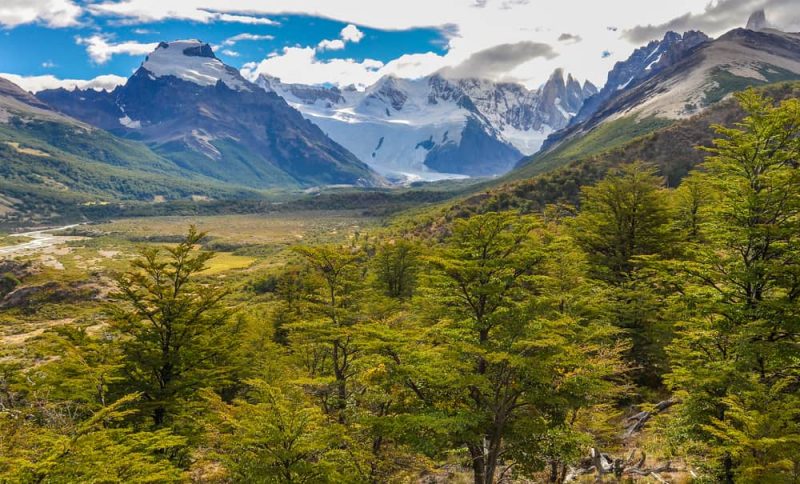
- Boulogne forest. With an area of 846 hectares, equivalent to twice that of New York’s Central Park, it is a Parisian public park and one of the main in Europe. It contains an abundant vegetation of wide woods, controlled and domesticated to achieve an area of recreation or urban recreation.
- Hayedo de Montejo. Beech forest (Fagus sylvatica) of 250 hectares of surface, located to the north of the Madrid province, bordering the Jarama river, in Spain. It is one of the southernmost beech forests on the continent and a site of national interest since 1974.
- The Russian taiga. The taigas or boreal forests typical of the Siberian region are abundant despite their extreme temperatures (19 ° C in summer and -30 ° C in winter), with annual rainfall of 450mm. This means that the plants have a favorable period of four months a year, despite which evergreen conifers often exceed 40m in height.
- Bavarian forest. Located in Bavaria, in southern Germany, it extends to Austria and Czechoslovakia, where it acquires other names (Sauwald and Bohemian Forest, respectively). It is an important European nature reserve and a source of abundant tourism, since within it is the Bavarian Forest National Park.
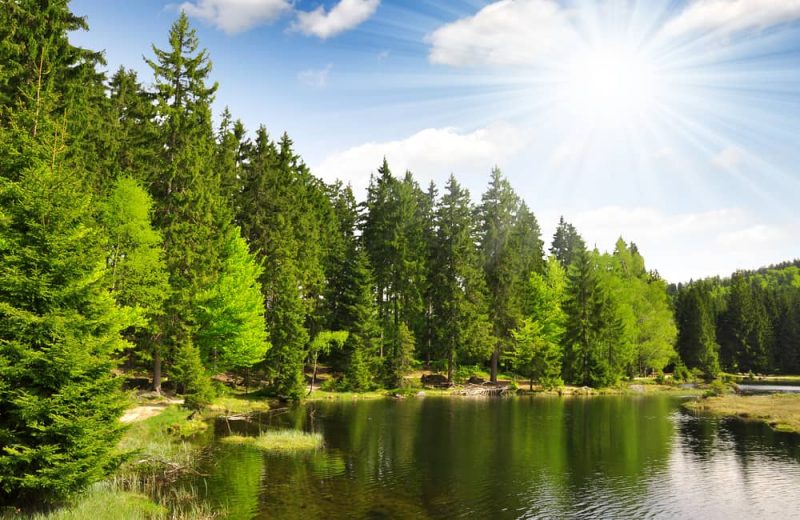
- Magellan subpolar forest. Located in the southern reaches of the Andes Mountains, as well as in Tierra del Fuego, it shares many of its plant species with other southern forests in Australia, Tasmania and New Zealand, although it also has endemic species as a certain type. beech. Their climates range between 6 and 3 ° C depending on how close to Antarctica they are.
- Forest of Sainte Baume. Known as the “forest of Mary Magdalene” and close to Marseille, France, it is considered a mystical forest because it contains the cave in which the biblical character supposedly died after his expulsion from Palestine. The forest is almost 12 kilometers long along a rocky cliff and is today a pilgrimage center of French Provence.
- Conguillío National Park. Located in the Chilean Araucanía, it has an area of 60,832 hectares of a varied and unique flora of the region, whose predominance of araucarias and coigües reminds of prehistoric times. The relative humidity in the area is low, but the cold weather during winter usually brings severe frosts.
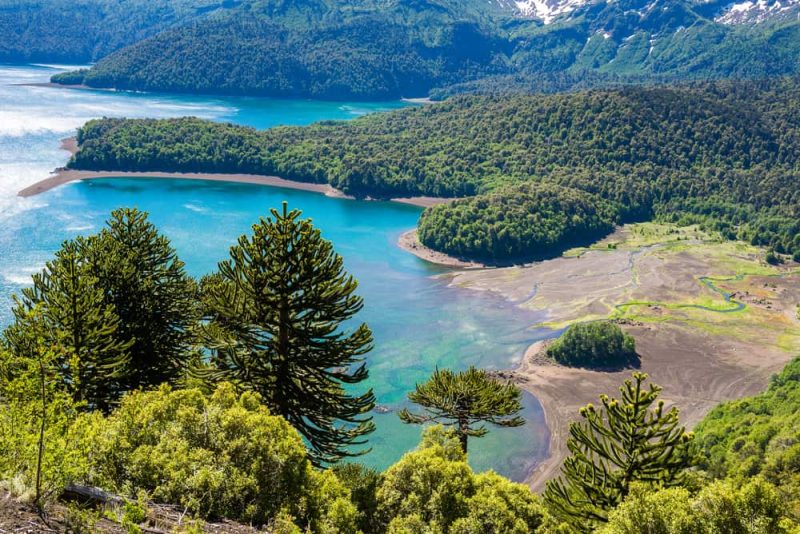
- National park Canaima. Located in Bolívar state, Venezuela, it is a UNESCO World Heritage Site since 1994 and the sixth largest national park in the world. It spans an area of 30,000 km2, up to the border with Guyana and Brazil, and has more than 300 endemic plant species.
- Great Smoky Mountains National Park. It is a forest-covered mountain range between the states of North Carolina and Tennessee, known as the Great Smoky Mountains. It is the most visited national park in the United States, given its lush vegetation with a humid and temperate climate, as well as the remnants of the southern Appalachian culture that it contains.
- Fontainebleau Forest. 60 km from Paris, this forest, formerly known as the Beer Forest, covers an area of 25,000 hectares, in the middle of which are the cities of Fontainebleau and Avon. Impressionist painters of the 19th century were often inspired by its rich color scheme for their masterpieces.
- The Black Forest. More a dense mountain forest than a proper tropical rainforest, this region of the German southwest has been immortalized in numerous artistic forms and is today an important natural tourist destination. It is a strip of vegetation 160 km long and between 30 and 60 km wide, depending on the region, in which fir trees predominate.
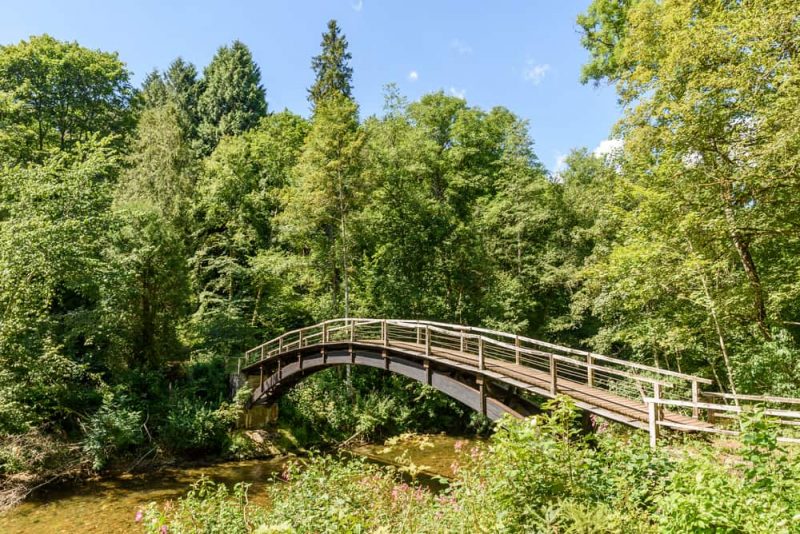
- Styx Valley Forest. Temperate eucalyptus forest in which the tallest flowering plants in the world are found (the Eucalyptus regnans), is located in a valley in Tasmania, South Australia, crossed by the River Styx. Its total area is unknown.
- Los Haitises National Park. To the northwest of the Dominican Republic there is an area of mogotes close to each other, populated by dense tropical vegetation for a total area of 3600 km. Its name comes from the aboriginal word to designate these sudden rocky elevations that can reach 40m in height.
- Clayoquot Sound. Populated by the indigenous Nuu-Chah-Nulth peoples, this forest located on the west coast of Vancouver Island has been ravaged by the logging industry, given its rich plant life of cold-climate conifers. The defense of the forest by ethnic groups and Green Peace activists set an important precedent in this type of initiative that led to the signing of an ecological treaty in 2001.
- Plitvice Lakes National Park. The best known of the Croatian national parks and a UNESCO World Heritage Site since 1979, it covers an area of 30 thousand hectares, of which 22,000 are covered with forest, 90% of which are beech. This park was a candidate to be one of the Seven Natural Wonders of the World in 2011.
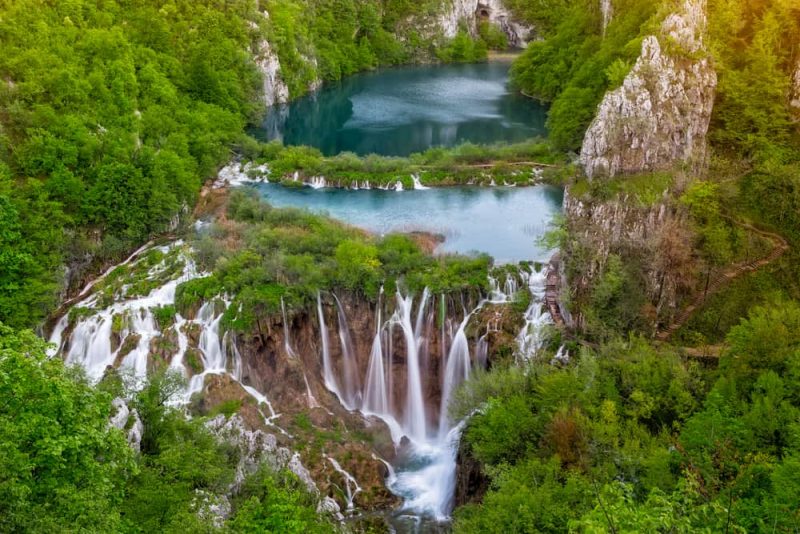
- Couvet Communal Forest. One third of the Swiss area is made up of forests. In this case, the one located in Neuchâtel, Switzerland, is one of the most visited by tourism and part of the very modest plant reserves that Europe has protected.
- Mountains of Southwest China. One of the temperate climate habitats with the largest number of endemic species in Greater Asia, it is home to the currently endangered giant panda. Only 8% of the forest is preserved in its ideal state, as the rest is at the mercy of indiscriminate logging and urbanization.
- Forest of the Constituents. Located in the city of Rosario, Argentina, it is the largest green area in the city with 260 hectares of extension. It is an area highly intervened by man, to recreate artificial lagoons and abundant roads, as well as numerous sustainable ecological research initiatives.
